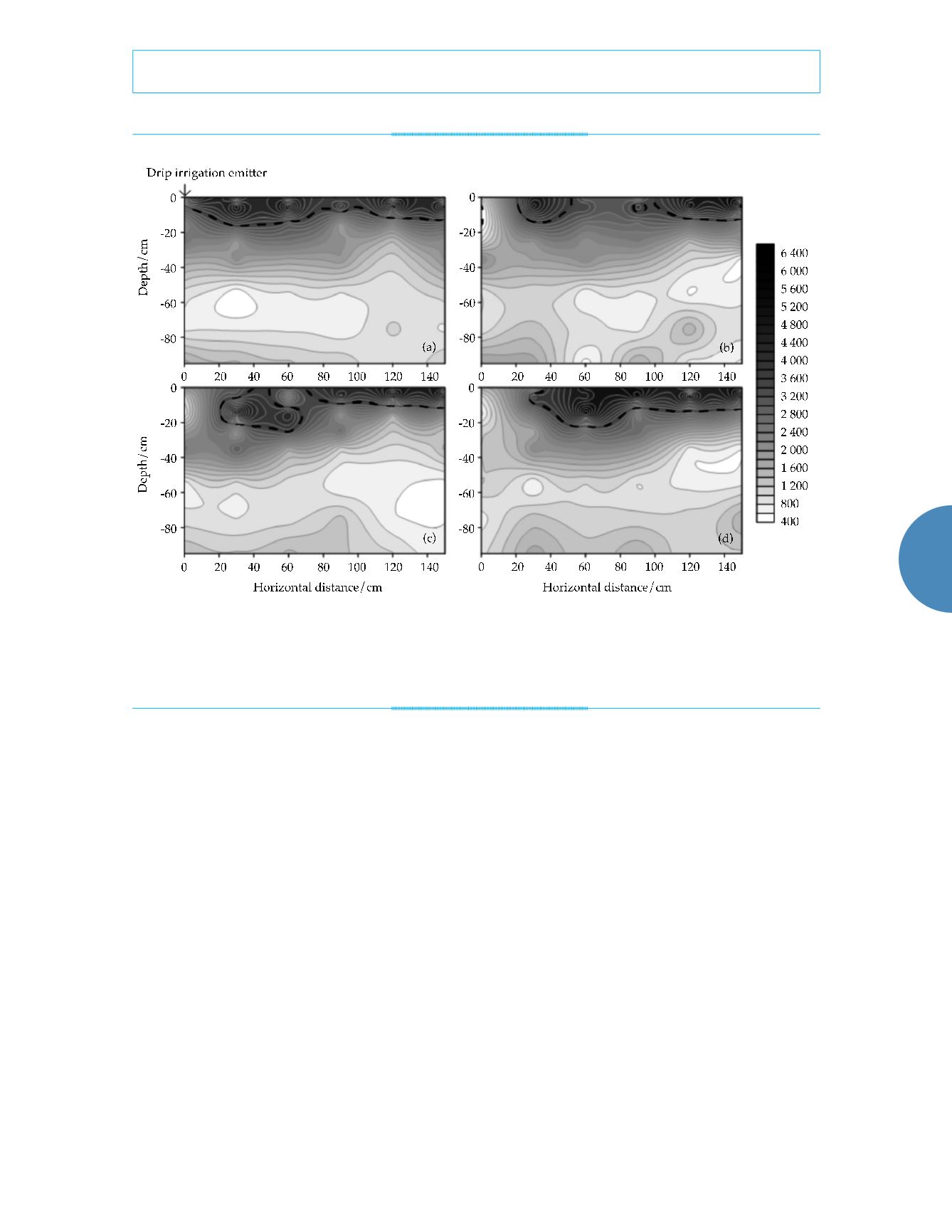
25
Tecnología y Ciencias del Agua
, vol. VIII, núm. 2, marzo-abril de 2017, pp. 19-30
Fan
et al
.
, Effect of drip irrigation with saline water on the shelterbelts to soil and groundwater environment in the hinterland of Taklimakan Desert, China
ISSN 2007-2422
•
variance was used to analyze the data from sta-
tistical experiments, and the respective results
are presented in table 2.
The comparative analysis of the above re-
sults revealed no significant differences on all
indicators of various treatments, except for plant
height of
Tamarixramosissima.
This indicates that
various irrigation systems have no significant
effect on plant growth. The plant height differ-
ence for
Tamarixramosissima
can be assessed us-
ing the multiple comparison procedure among
groups, which yields the results as shown in
table 3. As can be seen, no significant difference
was found between regions I and II, while there
were differences found between region I and
region III or region IV at the significance level
of 5%. At a high significance level of 1%, there
were differences between regions I and III.
gradually moved from the lower layer to the
upper one in the vadose zone, and was accu-
mulated in a depth range from 0~25 cm (dotted
line) on day 9. Figure 3(d) shows that salt was
continuously accumulated in the surface soil
body at a horizontal distance of 20-140 cm from
the dripper and a depth of about 20 cm.
Differences in plant growth under various
irrigation volumes
With the survey method for shelterbelt tree seed-
lings, ten representative plants were randomly
selected for the measurement of plant height,
crown width, and diameter at the ground level.
These characterization parameters are used to
reflect the impact of different irrigation sys-
tems on plant growth. Single-factor analysis of
Figure 3. Soil salt migration process within the irrigation cycle (a) Isoline of soil electrical conductivity one day after irrigation;
(b) Isoline of soil electrical conductivity three days after irrigation; (c) Isoline of soil electrical conductivity six days after
irrigation; (d) Isoline of soil electrical conductivity nine days after irrigation.


